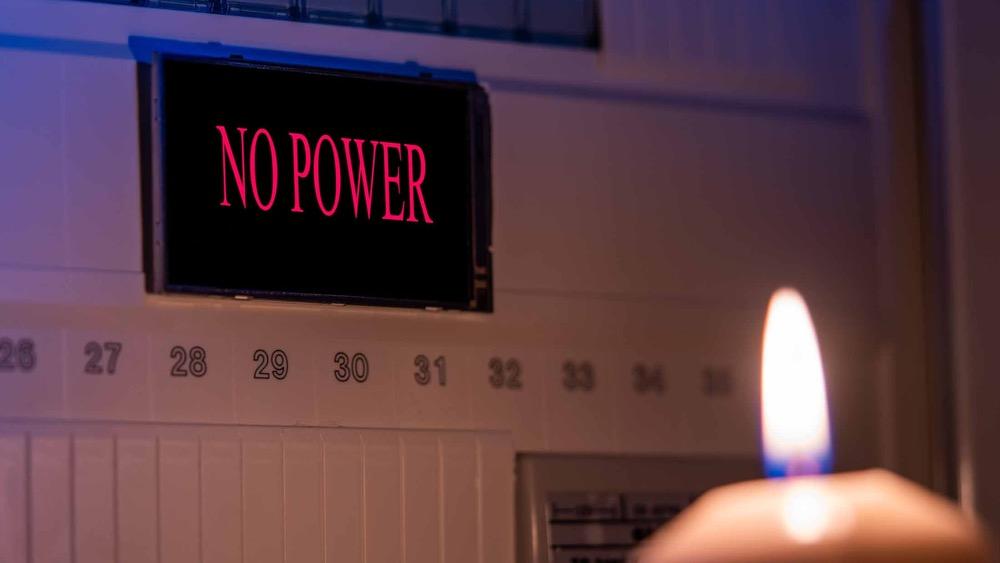As the rig bores deeper and deeper, additional drill rods need to be added to keep pushing that drilling head down. And that’s what you see happening here. There the the new drill rod is being moved into position, it threads onto the end of the old one. And then when it’s tight, they can remove that wrench and start drilling again and going down another 20 feet or so until it’s time for another drill rod to be added.
out in the country, your waterwell is really important, just about any kind of home needs a water source of some kind. And this video documents the day that we had the well drilling rig out to my son Roberts cabin to try and find some water for him. Now one of the things about this process is that you never really know if you’re going to hit water. So it’s a bit nerve wracking. You could spend 1000s of dollars and end up with a dry hole. We ended up with a really great well, and we’ll get to that eventually. But what I want to share with you now is just the processing and how it all unfolded on that day. The thing you see dangling here is the drill bit or one of two drill bits that are going to be used this is larger in diameter, and it goes in first to create a slightly larger hole for the metal casing or metal pipe that’s going to go down later. Here the drilling has started. And you can hear the sort of pounding action of the actual drill rig it rotates and pounds and pulverizes its way through rock. Here in our particular site. The Rock is probably about two or three feet down. And from then on, it’s just limestone bedrock, the hallway. This metal pipe is the casing which sticks up above the ground and keeps groundwater out. And the welders applying a nameplate which is unique to our well. What you see here is pretty much what well drilling is all about. It’s standing around watching this big drill bore a hole into the earth, there’s a little bit of water coming out, they pump that down to lubricate the bit as it’s working. Here you see the guys removing the first drilling head that they used. It’s somewhat larger in diameter than the head that they’re going to use for most of the well and it’s larger so that the hole is bigger, so it will accommodate the metal casing that you saw the welder working on before. Here, the casings going in there just wrestling it into place. Now the purpose of the casing is to make sure that groundwater does not get into the well that we’re really only getting that deep down water, which is the the purest and cleanest stuff the water we want. The bags you see here are chunks of bentonite clay, and they’re going to go around the casing later on and in contact with water they swell up and seal around the outside of the casing. Right now the rig is being used to pound the casing solidly all the way down into position so that the top is at the right height.
Here they’re applying that bentonite clay I was telling you about it gets filled in around the casing. It looks kind of like gravel when it’s in its dried state. But as soon as it comes in contact with water, it starts to swell up and take him together at forms this impervious seal around the top of the casing. Well, now we’ve gotten down to the real business of drilling the bulk of the well. This is the kind of operation that you see going on hour after hour. But there’s a couple of things I want to point out to you. First, you’ll see some water coming out there. That water’s not coming from the ground. It’s still a dry hole at this stage. But the water is being pumped in from a separate tanker truck and it lubricates the bit as it’s pounding away at the rock at the bottom of the hole. There’s also air rushing up. The air is actually what drives the head that does the pulverizing of the rock. Here’s a closer view of the chain look at the chain on either side. It’s slowly inching down. That’s the rate of progress. of the bit as it’s going through the rock, it’s actually dolemite is fairly hard as sedimentary rock goes. But this thing has no trouble boring right through it. Here’s an elevated view of what’s going on. And you can see the the dust kicked up by the air that’s being forced down into the hole to try for the head. When we finally do hit groundwater, that air being pumped down will cause the groundwater to to rise up and shoot out. And that’s when you know you’ve hit water. As you can see, by the big pile of cuttings on either side of the hole, we’ve been drilling here for a while, we still haven’t hit any water, we’re probably down about 120 feet now, the water that is coming out is just the stuff that’s been pumped in. But I can tell you that something is about to happen here. I want you to notice the color of the slurry that’s coming out of the hole. It’s starting to get darker now. And we’re starting to get more water coming. The well driller notices that and he’s pointing it out to the camera here because we are actually about to hit some significant water, the first water that we’ve hit in the whole process. significantly more water is coming out of the well now than is being pumped down. So we definitely hit something. The reason that water is coming up all that way from underground is because of the air that’s being pumped down to drive the drilling head. When we hit water, the well driller estimated that we were getting a constant flow of probably 40 to 50 gallons a minute, which is a really good flow. And we were very fortunate and we’re very thankful to have hit this kind of water. Because as I said, you really don’t know what you’re going to hit until you start drilling. The question now remains, how much farther Do you keep drilling. Because we’ve clearly hit good water, we want to go down far enough that we make sure that we really do have some good stuff in large enough quantities. But it is possible to drill too far. Sometimes it happens that if you keep drilling too much, you’ll open up an empty rock crack or fissure or something and then all your your water will start flowing down and you won’t actually have any in your well at all. So we’re just finishing up the 20 foot long rod here. And then we’re going to call it a day. As it turns out, the well ended up being 146 feet deep. And we’re looking forward to lots of great water. I know from measuring to that the water rose to about 13 feet below the surface of the ground, which is nice and close to the ground. So it makes for easy pumping.
The well driller found this rock which is kind of interesting. It’s a regular color on one side, but it’s dark brown on the other. And he figures that was along the edges of the water cavern or underground passageway that we hit when we first got into that great water. So there’s probably a lot down there. All at all. We’re very thankful that we’ve hit some great water and we had a great well driller to help us do it too.
Steve Maxwell and his wife Mary live on a 90-acre modern homestead on Manitoulin Island, Ontario in a stone house they built with local materials beginning in 1985. Steve is Canada’s longest-running home improvement and how-to columnist and editor of Home and Property. He divides his time working on the land, building things large and small, and creating articles and how-to videos that teach sustainable, self-reliant, hands-on living skills.
















